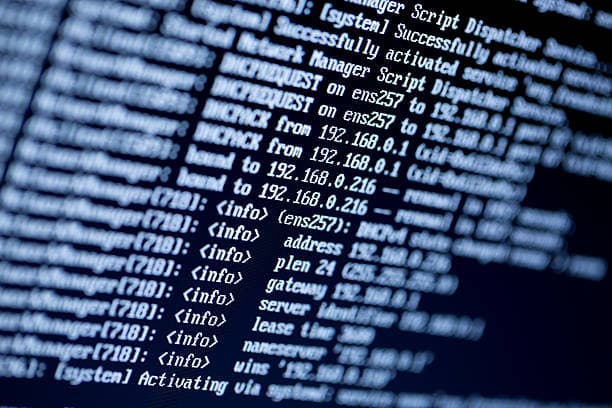In the current digital era, system security is critical. It is more crucial than ever to safeguard our data and guarantee the integrity of our systems due to the rise in cyber attacks. Linux, which is renowned for having strong security capabilities, provides a strong base for protecting your system from different online threats. We’ll look at some important tactics in this post to improve the security of your Linux-based system.
Recognizing the Threat Environment
Knowing the threat landscape is crucial when it comes to cybersecurity. Creating successful protection tactics requires a deep grasp of the different kinds of cyber threats. Cybercriminals use a variety of malevolent tactics to breach computer systems, networks, and data security, which is known as cyber threats. Malware, ransomware, phishing scams, DDoS (Distributed Denial of Service) assaults, insider threats, and more are some of these dangers.
Malware, an abbreviation for malicious software, is a large class of software intended to compromise and harm networks or computer systems. Malware frequently takes the form of worms, Trojan horses, spyware, and adware. One especially sneaky type of malware is called ransomware, which locks users out of their computers or encrypts files and then demands a fee to unlock them.
Phishing attacks entail the use of false emails, websites, or messages to fool people into divulging private information, such as personal information, login credentials, or financial information. These assaults frequently use social engineering techniques and human psychology to trick victims into doing things that jeopardize security.
DDoS attacks seek to stop a targeted system or network from operating normally by flooding it with so much traffic that it becomes unavailable to authorized users. Businesses and organizations may suffer major disruptions and monetary losses as a result of these attacks.
Insider threats present a distinct challenge to cybersecurity since they entail personnel within an organization abusing their access privileges to compromise the business’s security posture, whether on purpose or accidentally. Insider threats might originate from hostile actors, careless people, or unhappy workers who have obtained unauthorized access to confidential information or systems.
It is crucial to comprehend the subtle differences between each kind of cyberthreat in order to create preventative strategies that reduce risks and shield against impending attacks. Organizations may better equip themselves to fend off cyberattacks and protect their digital assets by keeping up with the latest developments and dangers in the cybersecurity space.
Putting Robust Authentication Systems in Place
Strong authentication techniques are one of the primary lines of defense against illegal access. Multi-factor authentication (MFA), SSH keys, and passwords are only a few of the authentication methods available in Linux. Enforcing complicated password regulations is crucial, requiring users to generate secure passwords that are challenging to guess. Furthermore, by doing away with the necessity for passwords entirely, turning on SSH key-based authentication gives an additional degree of protection. By requiring users to submit several kinds of verification before gaining access to the system, MFA significantly improves security.
Update and patch your system frequently.
Updating your system with the most recent security updates is essential for fixing vulnerabilities that have been made public. Updates and patches are often released by Linux distributions to fix security flaws and enhance system stability. Through consistent system updates and timely patching, you can lessen the likelihood that hackers may take advantage of your system. Package managers like apt or yum are examples of automated update methods that can simplify the process of maintaining system security.
Restricting Privileges and Access
Restricting access and privileges is another useful tactic for improving system security. Users can be limited to only the commands and resources required for their roles by enforcing least privilege rules. Administrators can precisely adjust access rights with Linux’s powerful access control capabilities, which include sudo privileges and file permissions. Unauthorized access and privilege escalation are two examples of possible security threats that can be found and reduced with regular user authorization audits and reviews.

Turning on Intrusion Detection and Firewall Systems
Detecting and stopping network-based attacks is a major function of intrusion detection systems (IDS) and firewalls. Linux distributions have built-in firewall programs like firewalld or iptables that let you set rules for both inbound and outbound traffic. Data breaches and unauthorized access can be prevented by implementing firewall rules to block harmful traffic and restrict access to necessary services. Deploying intrusion detection systems (IDS) software, such Snort or Suricata, also makes it possible to monitor and detect unusual network behavior in real-time, which assists in identifying and reducing potential security concerns.
Data and Communication Encryption
Sensitive information and conversations must be encrypted to prevent illegal access and eavesdropping. Linux comes with powerful encryption tools that let you encrypt files, directories, and network traffic, like GNU Privacy Guard (GPG) and OpenSSL. By utilizing technologies such as dm-crypt to implement full-disk encryption, data stored on disk is protected even in the case of physical theft or unauthorized access. Using encrypted communication protocols, such SSH or HTTPS, also contributes to network traffic security by preventing malicious actors from intercepting it.
Observation and Recordkeeping
Any security approach must include effective logging and monitoring. You can quickly identify and address security issues by keeping an eye on system activity and recording events. With the help of programs like syslog-ng and rsyslog, Linux offers extensive logging features that let you record and examine system logs for unusual activity. Your ability to identify and effectively respond to security threats is further improved by putting intrusion detection systems and security information and event management (SIEM) solutions into place.
In summary
Your Linux-based system needs to be secured using a multi-layered strategy that takes into account several system security facets. You can greatly improve the security of your system and defend against cyber threats by comprehending the threat landscape, putting strong authentication mechanisms in place, patching and updating your system on a regular basis, restricting access and privileges, turning on firewalls and intrusion detection systems, encrypting data and communications, and keeping an eye on and logging system activity. In an increasingly linked world, you can protect your system and guarantee the accuracy of your data by using three crucial tactics and exercising caution.
